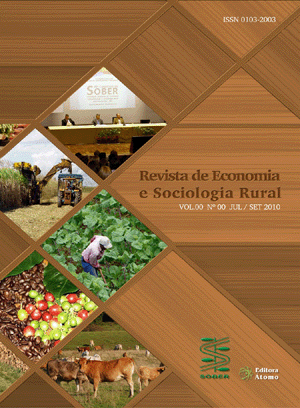The objective of this research is to analyze the impact of variables in the agricultural land price formation between 2000 and 2010 in three different regions in Brazil: the most recent agricultural frontier (southern Maranhão, southern Piauí, southeastern Tocantins and western Bahia), the transition area (which has a relatively recent exploration, but the agricultural exploitation has already been established, such as the Central-Western region in Brazil) and the traditional area (with established agricultural activities, as the Southern). The variables used were soybean price, productivity, cultivated area, rural credit, investments in transportation, capacity of storage and land price in previous periods. The analysis is carried out with a panel data model, and it was observed that soybean price, which represents land revenue, has the major influence in the land price. In the agricultural and transition areas, increases in land demand have negative impact in the land price, due to the increase in the land supply. On the other hand, in the traditional area, increases in the demand push up the land price, due to the inelastic land supply. The speculation variable was not important in the transition and traditional areas, but it has an important contribution to land prices formation in the agricultural frontier.
Land market; agricultural frontier; panel data









